Aries Cerat preamplifiers compared – Incito S and Impera Reference
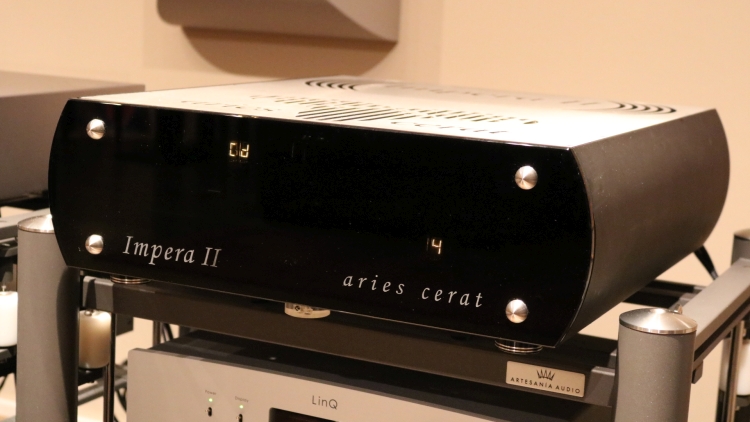
Review sample supplied by Ultisone and Callas Audio
Retail prices in the NL including 21% VAT:
Incito S: 14.200 euro
Impera Reference: 22.000
Following my initial review of the Aries Cerat Incito S preamp and the Heléne DAC, Ron of Callas Audio had jokingly said that the annoying thing about Aries Cerat equipment was that no matter how great a model sounded, the model above it would be even better. The advice, therefore, was to not listen to a model that you can’t afford. Shortly thereafter, it was suggested by Michel of Ultisone to review the Impera Reference preamp, a model that sits above the Incito S. Michel concurred with Ron’s viewpoint but did not tell me anything about the relative differences, leaving this for me to find out. Expecting the Incito S and the Impera to be relatively close to one another, I suggested making the review into a comparison between the two models. To this end, Michel supplied the Impera while Ron once again supplied his Incito S.
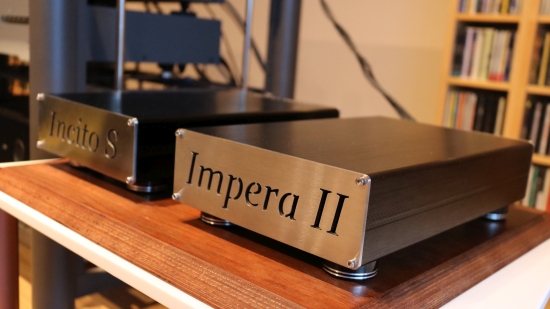
Above: Incito S and Impera Reference power supply units sharing a level of the Artesania Organic Line Modular Rack.
Upon hearing the two models side by side, I quickly learned that there was no hyperbole whatsoever and that the two preamps do indeed inhabit two different performance classes. This being the case, I decided to put the focus for this review on the Impera Reference but with the Incito S added for perspective.
Impera models
The current Impera range exists 0f three different models, all of the “II” (2) generation. The basic model that I will be reviewing here is called Impera Reference but note that the preamp has “Impera II” printed on its front panel as well as on the power supply unit. Above the Impera Reference is the full-twin-chassis Impera Signature and above that is the Impera Limited Edition which is the current top model.
My “basic” Impera Reference is strictly speaking also a 2-chassis design but instead of the Impera Signature’s full-twin-chassis, the Reference preamp utilizes a small external housing just like that of the Incito S preamp for the power transformer. The umbilical cable between the power supply and the preamp carries AC from the transformer’s multiple secondaries. The AC is then rectified, filtered, and regulated locally.
With a 52 cm width and a 53.5 cm depth, the Impera is wider and considerably deeper than the Incito S. While the latter looked normally sized and even a little cute compared to the bulky CH Precision components, the Impera actually makes the Swiss blocks look cute. To put this into perspective, the Incito S is 48 cm wide and 35 cm deep while the Impera Reference is 52 cm wide and 53.5 cm deep. Those 4 centimeters in width may seem insignificant but when you see the unit in person, you will probably be shocked. Once you have recovered, try to lift the unit and you’ll be in for another shock! It weighs 65 Kilograms, so you better have a large and very sturdy rack!
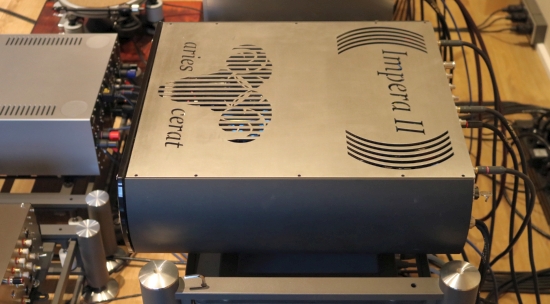
Technical Differences
So just how does the Impera differ from the Incito S, you ask? Peeking inside, I see similarities such as the TVC volume control but also lots of differences, mainly in terms of the sheer amount of transformers and chokes inside the Impera. I think it’s safe to say that 4/5 of the unit’s internal volume is taken up by transformers while the volume control and active line stage take up the remaining 1/5 on two small PCBs.
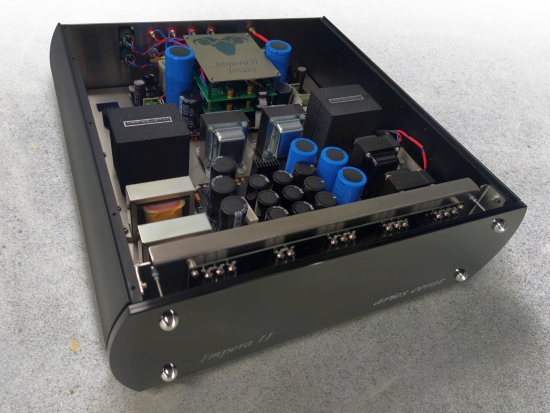
There’s not a lot of technical information available. Such is the maker’s philosophy, it seems, that he does not want to dwell on technicalities but rather lets the audio component’s performance speak for itself. The European Aries Cerat website mentions the basic specifications and mainly focuses on the Impera’s Inverted Triode Technology, which I will detail a little further below.
Like the Incito S, the Impera utilizes Multi-tap input transformers as the attenuation method for volume control, along with the stylish Nixie-Tube input- and volume indicators behind a thick glass front panel. For the Impera Reference, in particular, it’s mentioned that the multi-tap input transformer has a special bifilar winding which results in excellent performance both in frequency and time domain. The 26 separate taps are switched by small-signal sealed relays.
The Impera Reference has what is referred to as a “Double choke-filtered quad power supply. So, 8 power supplies? From the looks of it, that certainly seems right! All four vacuum tubes are fed by special quality PSUs, with four individual choke filtered capacitor banks. There are 5 unbalanced inputs, an HT pass-through, and a single unbalanced output. Optionally, one can also fit balanced in- and outputs.
Inverted Triode Technology
Inverted Triode Technology is a vacuum tube innovation developed by Aries Cerat and utilized in the Impera II series. According to the manufacturer, the technology is different from any kind of vacuum tube used in audio and tube electronics in general. In the basis, three electrodes, a cathode, grid, and plate, are combined to give an amplification device completely different in operation from the classic vacuum tube.
Inside a typical vacuum tube, an electron stream emitted from a heated cathode is accelerated toward a positively charged anode, which has a flat plate structure. The electron flow is impeded by the grid, a negatively charged wire-grid structure, placed between the cathode and anode. This operation resembles a typical fluid control valve, hence the name “valve” tube.
Inside an Inverted Triode tube, the electron stream emitted from a heated cathode is accelerated towards the anode, now a wire-grid-like structure. The electron flow is now unimpeded since no grid structure exists between the anode and cathode. Instead, a plate-like structure, enveloping the cathode/anode assembly, called the control “grid” is shadowing the anode electrical field, having a very high negative electrical field itself, thus “pushing” the electrons away from the anode. This mode of electron flow control is completely different from the triode mode of operation.
The inverted triode actually acts like a virtual “vacuum state transformer”. Instead of having gain, the inverted triode has only a fraction of unity gain, just like a step-down transformer. The internal resistance is many times lower, and input capacitance is nearly zero.
The inverted triode has a 100 times lower plate resistance than a 6SN7 tube and zero input capacitance which gives the output stage superb measured performance and a 2 Hz-500 KHz bandwidth, figures that are apparently not achieved by other triode designs with a transformer output stage.
According to the manufacturer, another example of the Inverted Triode’s technical advantage over a typical vacuum tube such as the 300B can be found in a comparison of the two driving the same output transformer. The Inverted Triode tube presented a power bandwidth of 2 Hz-500.000 Hz whereas the 300B tube had a bandwidth of 15 Hz-100.000 Hz. Same transformer, same driver tube, but 5 times the bandwidth for the Inverted Triode tube.
The output stage is driven by the input tube with the help of an amorphous double-C core signal choke. The output stage then drives a high-quality double-C core output transformer with a bifilar winding technique, which gives the transformer supreme frequency extension and supreme transient signal response parameters.
Bias Adjustments
Just like the Incito S, the Impera II’s bias can be adjusted by the user to find just the right balance between warmth and control. Both Ron and Michel had made sure to adjust the respective preamps to their default settings. As I initially wanted to experiment with this for the Impera, I requested instructions for the procedure but as time went by, I decided that the factory setting was actually perfect and no adjustment was required. For those who want to experiment with this, the instructions are as follows.
Note that current Impera models have internal bias value displays but my earlier sample requires a simple volt-meter. The black ground wire should be connected to the Impera’s rear panel earth connection while the red “live” wire should be connected to the rearmost E280F tube’s pin 1 (first pin after the break) while adjusting the potentiometer. The procedure must be done for the left- and right channels individually. The minimum usable value is 150, the maximum is 180. Michel indicated that the minimum audible increment is 5 and that the factory-recommended setting is midway between these values, so 165. He left my unit on 170.

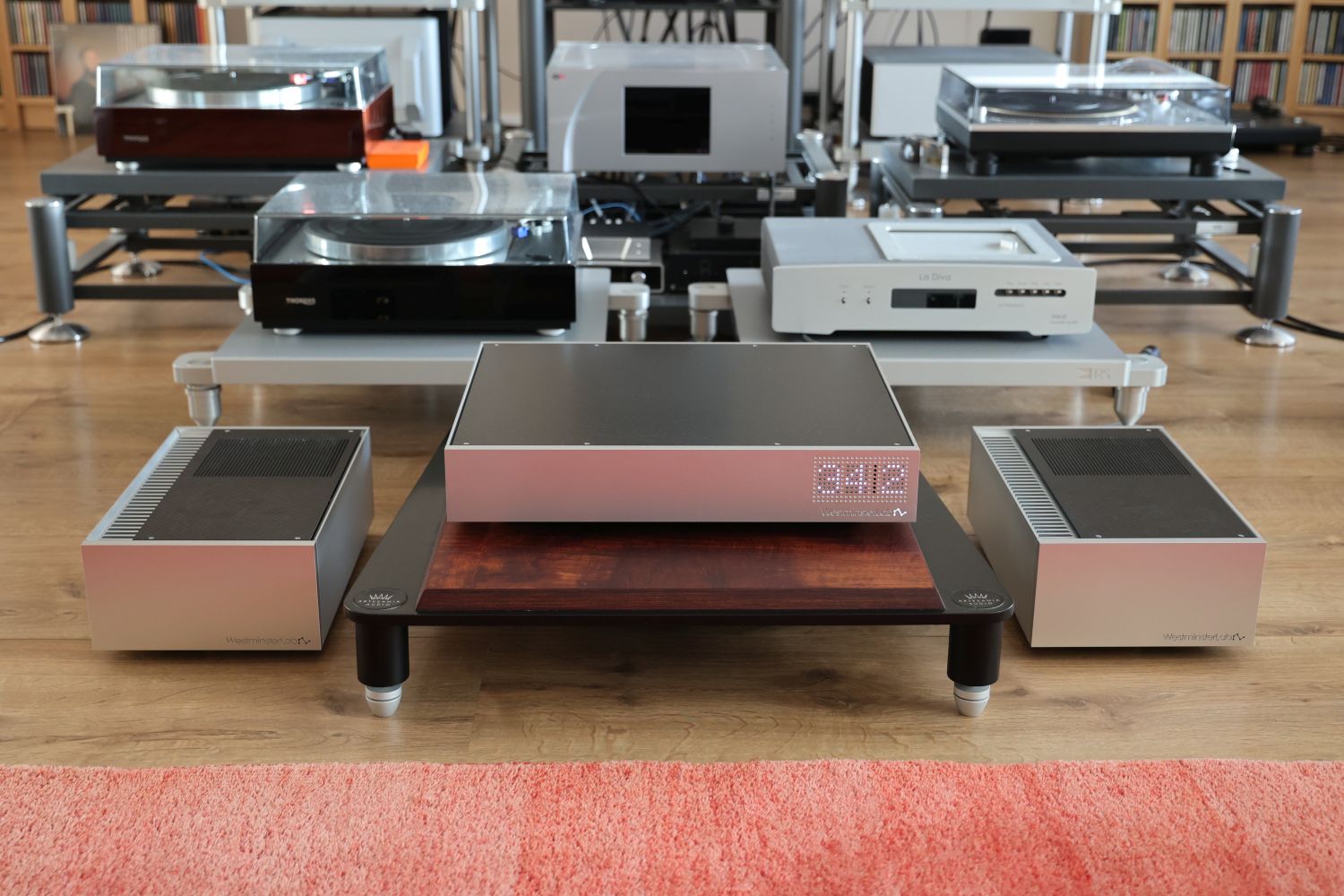
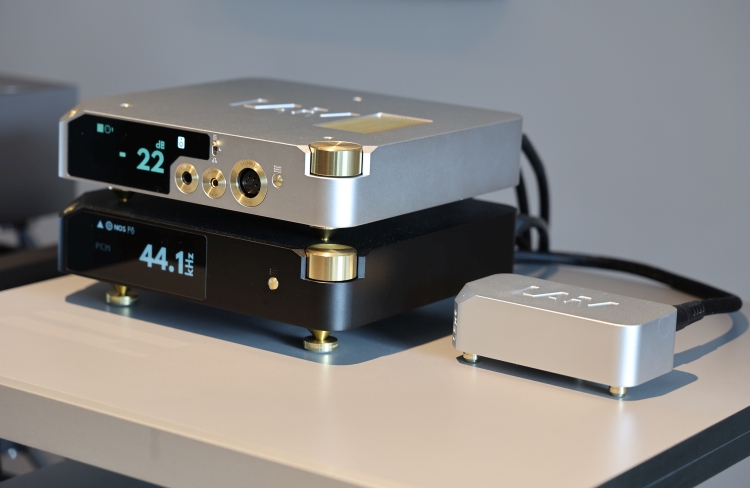
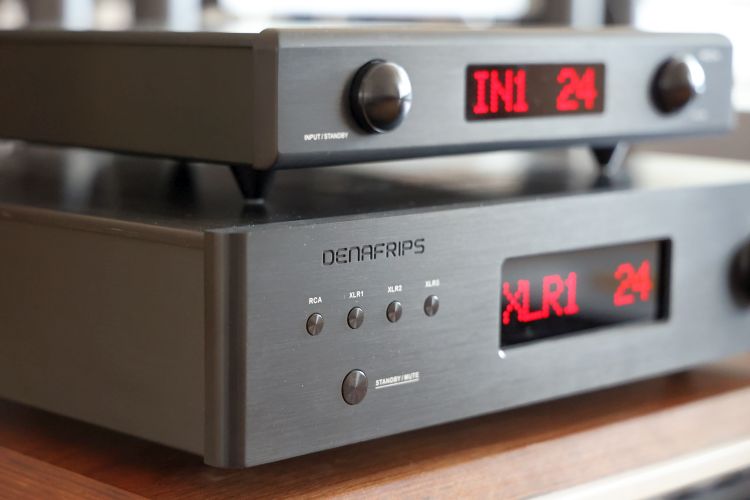
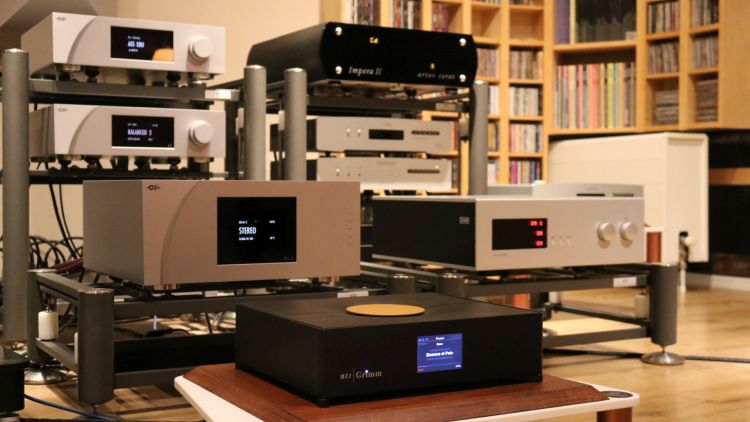
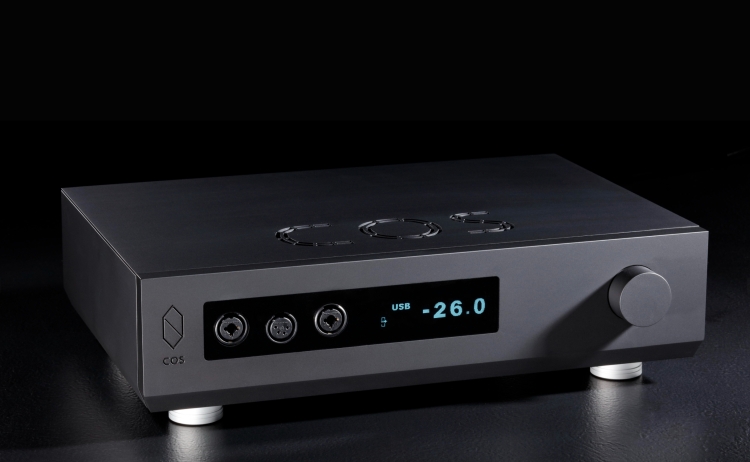
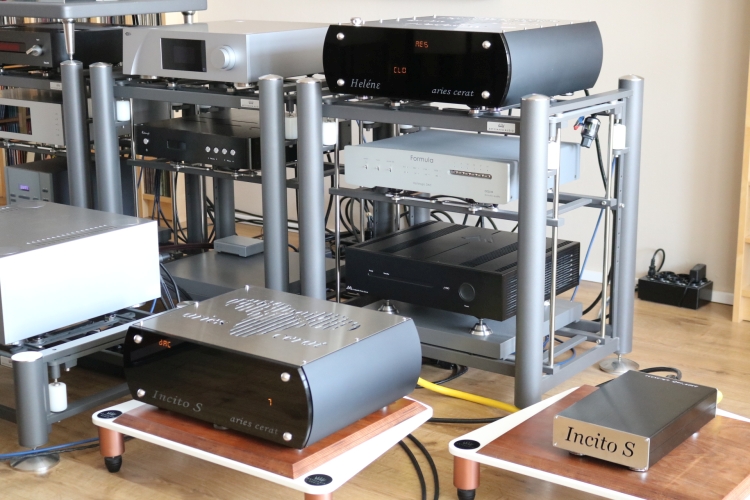
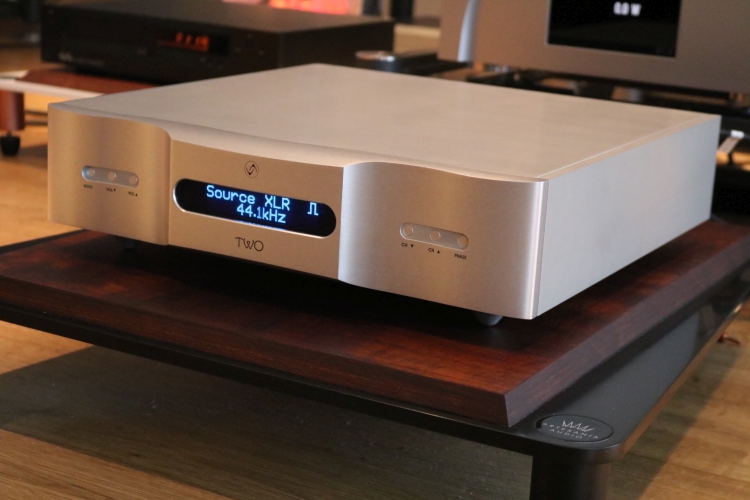
I owned the Accuphase C3900 solid state preamplifer, then replaced this with the tube Nagra HD Preamp HV. With the Nagra, there is a significant improvement in bass quantity and quality (for example bass textures), amongst other improvements.
It seems as if the “old saw” about tube units lacking bass when compared to their solid state counterparts (at least for preamplifiers) is no longer valid at the top level.
Dear Christiaan,
thanks again for the exciting review about the two Aries Cerat preamps. Like yourself I use a CH Precision C1 as DAC and as a preamp. Your review about the L1 especially in combination with the X1 got me thinking to get them if an occasion arises. Also I’m wondering why you still use the C1 alone without a L1 or even a X1. From what I read in your review you were quite impressed about the L1 especially with the X1 in your chain.
Now I have the chance to get a used L1 plus X1 with two regulator boards for a very reasonable price (it’s around the list price of the Impera II Ref). But after reading your review about the Incito S and especially the Impera II I’m unsure which way to go – L1+X1 or Impera II. Or maybe stay with the C1 alone like yourself. Unfortunately I’m not able to listen to either preamps to get to the right decision. I already searched the Internet about useful messages and other reviews. What I found is high praise for both brands. And the system synergy was mentioned a lot particularly with a complete CH Precision chain, but also with a Aries Cerat chain. So I was hoping you can help me with your vast experience to find the right perspective for a decision.
My YG speakers are quite power hungry, I guess a future amp will be rather from CH Precision than from Aries Cerat. But even with your C1 and A1.5 and the system synergy in mind would you still prefer the Impera II against L1 + X1 in your chain?
Thanks in advance for your insights
Michael
Hi Michael, meanwhile, among others as a result of a series of improvements to my room acoustics that resulted in tighter bass and a cleaner, more precise, and more neutral sound overall, I have changed my original opinion of the C1 relative to the C1 + L1 and I am now I am actually using the L1 with the C1.
As you mention, both brands receive high praise, and that’s well deserved. It will come down to user preferences. Basically, the Impera is not as tight and precise (across the frequency range but for me most noticeable in the bass) as the L1 but the L1 is less spacious and free-flowing, and not as majestic or emotionally involving as the Impera and Incito S. The X1 will move the L1 closer in terms of intimacy and flow, but at the cost of some precision. Even now having had both the L1 and the Impera side by side for a prolonged period, I find that the decision between the two comes down not only to taste but also depends on my mood.
System synergy can definitely be a thing, but it is not sacred. In the end, it is about balance. CH works splendidly with AC and vice versa. As a great example, Ron Ploeger of Callas Audio loves his Aries Cerat Genus power amp but he also reports great synergy using his Aries Cerat front end with Concert Fidelity mono power amps. The one amp offers richness and romance, the monos offer clean neutrality but with musicality. He likes both.
Given that you have YG, I would definitely not recommend using a tube power amp.
Hi Christiaan, thanks a lot for your very helpful reply. And wow, that’s a surprise that you use a L1 again in your system. Thanks for your personal thoughts about both preamps, it’s surely quite nice to be able to exchange such fine preamps depending on your mood ;-). But I understand what you mean. I think I’ll go with the L1 and report back.
All the best
Michael
Hi Mike,
How is your finding with L1? Thanks
Kevin
We have compared Aries Cerat Impera II to Atma Sphere MP-1. They are in the same price range. MP-1 was (hugely) better, much more natural, greater transparency, more body, better middle range… well, the difference was not small.
Hello sir,
how are you?
i am reading your reviews for long time now and always enjoy them immensely .
i just read some of your impera II review and i saw you connect it to your main system that contain mainly with CHP equipment.
also i read this that you wrote –
On a related note: I am currently reviewing the Impera II with the CH A1.5 power amp and while this pairing results in a little too few volume steps down below, the sound is simply breathtaking. Indeed, quite something else than the CH L1, or any other preamp that I have heard, be it solid-state or tube.
if i can ask what do you mean in saying- “little too few volume steps down below” ?
does the impera II is perfect paired with the CHP amps? or does you had to change gains or other settings?
i saw you also had the incito s low gain, can you point about it also with pairing with the A1.5 please?
im not asking sound wise the different between the two AC, that i understand completely from your review but the technical condition with the CH equipment with the AC between them.
also if you have some comments about the AC pre amps v.s the CHP L1 i will be happy to hear your thoughts.
thank you very much!
Hi Aviad, good to read that you like my reviews! The Impera had a very high output gain which means that the positions in the lowest range of the volume control were basically very loud – loud – rather quiet – off, instead of multiple small steps. But one can custom-order the gain. This unit was just not ideal for the CH power amp. Nevertheless, I found it to sound really fantastic.
With the Incito S, this was considerably less of an issue, although it, too, had only a few steps below the level that I am comfortable with. So, if I were to order an AC preamp for use with the CH amp, I would get a lower gain version.
Of course, you can lower the gain on the CH A1.5 but that changes the sound, it makes it less tight and expressive. It’s just not ideal, entering with a very high gain, then attennuating the gain again.
Regarding AC preamps versus the CH L1, please see my extensive review here: https://www.hifi-advice.com/blog/am…g-preamplifiers-in-a-digital-streaming-world/ Basically, I really like both, for different reasons, as they are very different.
Hi,
I too have read your reviews for some time, always enjoying your thoroughness and shall we say reliability of your writings. Some things are worth describing completely and I never finish an article of yours wondering still what a component sounds like.
I would like to follow up on this question of gain with another question as I am considering purchasing an Incito S preamp. Clearly it will depend on the gain of the particular paired amp, but what would you estimate the dB increment to be between steps as you adjusted the volume? I prefer 1 dB steps or less and plenty of them if possible. I also prefer a readout of my volume which does not appear to be a feature with AC preamps as far as I can tell. Please correct me if I am wrong. Do you think the Incito S was close to 1 dB steps or was it more like 2 or 3 dB steps?
Your help with this matter is very much appreciated! Keep up the amazing work with the insightful reviews.
Cheers,
Christopher S
That’s very nice to hear, Christopher! The Incito S has a volume level display. It may not indicate actual dBs but it is very useful for finding the right level and re-finding it after adjusting. The volume steps differ in size depending on the volume level. At the very lowest levels they are quite large, a few dB I would guess. When the power amp has too much gain, that’s when you run into the steps being too large. But further up in the range, they are much smaller (probably indeed close to 1dB) and that worked well for me. Please note that the Aries Cerat preamp gain can be specified by the user when purchasing new. That way, you should have the ideal match.
Thank you Christiaan for your detailed and quite helpful response!
Dear Christian,
I have always been a fan of CH Precision since they first came out and I heard the C-1 DAC, with the original M-1 amp and L-1 pre-amp which I heard at Audio Arts in NYC. I lack financial resources more than most but still want to put a system together that is simple and sounds exceptional. I currently use a very old YBA -3 pre amp with a CHP M-1.1 amplifier and have an opportunity to replace the pre-amp I purchased the CHP amp used from Worldwide Wholesales distributer of Aries Cerat for Canada and the USA who I believe you would be familiar with. I read your reviews on the CHP L-1, as well as the Aries Cerat Impera and Incito-S. I have a pair of spkers that I can use for a direct trade for the Incito-S or for an additional 9k get the Impera new or if a used Impera becomes available and additional 5K. The Impera used + 5k (4k) would be preferred).
I also can purchase a CHP L-1 for 18k or so…..
your quote Christian (there was always a penalty either in terms of pacing, dynamics, bass control, transient speed, or transparency or even in all of these aspects (I dont want to lose these characteristics at all as i love these) Granted, with the Impera, you also get a tonally fuller, and slightly enriched delivery that I don’t feel is strictly 100% neutral or linear. However, for a change, all of the benefits come without any penalties.)
From reading your commentaries on the CHP L-1 and A-1.5 and also the A. Cerat Pre-amps in addition to the C-1 and C-1.2 DAC I have as close to the same taste in electronics as yourself as I could possibly have as far as I can tell. I want the speed, dynamics, control, detail etc etc just as you describe what you like with all the naturalness etc..would love to add the C-1.2 DAC …
So I think I would like to buy the A.Cerat Impera used so I could have the most impactful, dynamic…..etc.sound possible…I am afraid to lose the control and dynamics attack, slam etc that I love about solid state. I think I would like the 10 series pre-amo by CHP best but I think the A.Cerat Impera would be the best I could do on my budget. Would still consider the L-1 but think the ACerat Impera would sound better to me overall and would be 26k invested vs 21k for the Incito-S. Also I have T & A Solitaire CWT 1000 speakers
So I am planning on trying to wait for a used Impera and think it would be well worthwhile vs the Incito-S for most musical enjoyment. Owning the L-1 and hearing the other two do you think this would be correct ? Thank You.
Bill
Hi Bill, With the AC Impera, you’ll have the most dynamic and impactful sound that I have heard yet from a tube preamp, in addition to what you can expect in terms of positives from a good tube preamp such as harmonic richness, flow, and bloom. The CH L1 is not actually any more dynamic or impactful than the Impera but it is more linear and transparent and a little tighter and more articulate. And of course it is not a tube preamp, although it is most certainly also not typical solid-state-like. The more I use it, the less it makes itself heard, just like with the A1.5 power amp. It is so utterly self-affacing that it simply blends in and that is exactly what I want. Others might desire more character and any AC preamp will most certainly provide that. I’ve heard various 10 series CH components at shows but I have yet to hear an A-B comparison. As such, I still don’t know for sure how the 1 series compares. Thus, I can also not tell you how much better the L10 would perform compared to the L1. Between Impera and Incito, it is, in a way, a decision between ultimate refinement similar to what the L1 can do, and a less subtle, but more textured and visceral sound. If you can, I would suggest trying an Incito S first, live with it for a while, and decide from there if you need a shift in presentation.
Hi Christiaan
Your feedback is very much appreciated! I love how you describe the sound of the L-1. I believe I would be more satisfied with the sound of the L-1 after reading what was written above. I am not sure how I will proceed yet. I may consider a CHP DAC with the CHP M 1.1 as I currently do not have a separate DAC. Everything I had read previously only one person was satisfied with the DAC-to AMP combo without a pre-amp. I use a Electrocompaniet blu-ray player which for is price point is a good value and works well but of course can not play music in a higher end system. The idea of buying a used CHP 1.2 DAC and using it as a controller sounds like it might be a better way to go as I can not afford a high quality pre-amp and DAC. I would be very excited to do this because getting any of the pre-amps mentioned I would be without a capable DAC and hence can not really play and enjoy music with any reasonable satisfaction.
Warm regards
Bill Emery
Hi Bill, The C1 and C1.2 DAC are still my personal favorites and even without preamp, they belong to the best DACs I heard. That said, I’m afraid there’s ultimately no beating a preamp if you want maximum fluidity, flow, and refinement. But I agree it is good to get the basis right. And you can always add a preamp later:-)
Understood, very, much appreciate your reply. This is an understatement. Thank you!